
|   |

|   |
|
ANITA SAYS..... Your time is limited, So don't waste it by living someone else's life. Don't be trapped by dogma- Which is living with the results of other peoples thinking! - Steve Jobs Tech pioneer In the end, We'll all become stories - Margaret Atwood Writer 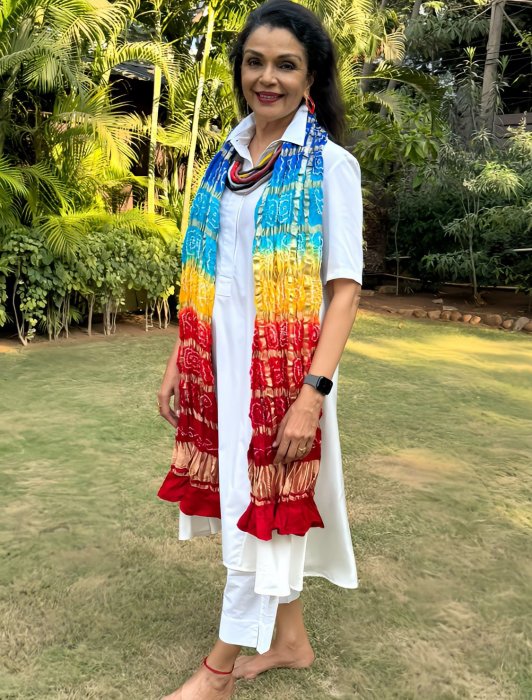 Having not danced, watched any performance or engaged with anyone connected with dance for a full month is a rarity for me. But it was a conscious decision. I needed to disconnect and distance myself for some time to be able to refocus and perhaps, even float. I wanted to enjoy a rhythm where there were no deadlines, no rehearsals, no performance related duties and no compulsions to finish or complete any project. A real privilege, I know, but something that was long overdue. 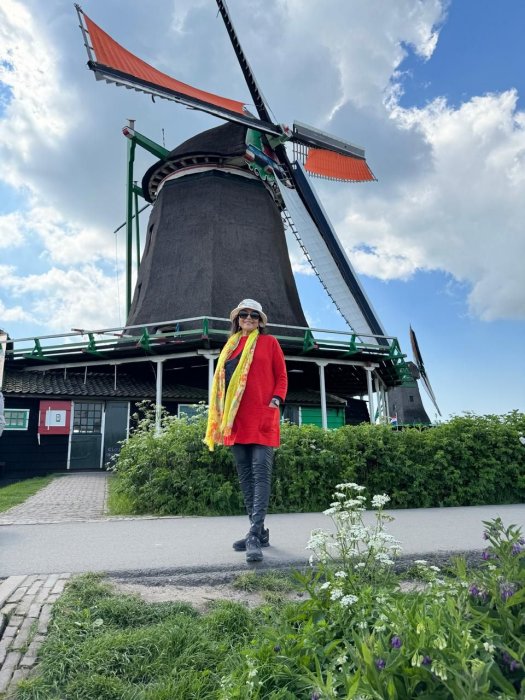 I did not climb a mountain or seclude myself in any ashram or a resort. Instead it was a month of travel, immersing myself with family, grand children (actually grand nieces and nephews), and re-engaging with literature, poetry and books that have been piling up by the bedside. The everyday simplicity of routines was restful. I enjoyed a 10 day break with my sister in Europe, took long leisurely strolls along cobbled streets and canals and realised the many advantages of living in India while admiring and marvelling at the brilliant museums that were on display in Amsterdam for thousands of tourists like myself. I also acknowledged that Denmark was amongst the happiest countries on earth - the Danes being a relaxed, elegant, and refined version of a modern Scandinavian! While there seems to be no cessation in dance programs, festivals and dance related events in India, despite the blistering heat, the buzz and chatter of excitement with the young diaspora dancers was both palpable and audible via social media. However, in this edition, I will choose to focus on issues that are emerging or have continued to hover around the ecosystem of Indian dance. #PRIDE MONTH  It's June and that means PRIDE MONTH. Those of you who follow me on my social media handles know that I am a vocal and visible ally of the LGBTQIA+ communities. As identities become more complex and voices more nuanced, I reaffirm my support to every single individual who chooses to live and love as they please. We live in a rainbow world and the creative industries have always welcomed everybody across the identity spectrum. So this June and every month that follows, I want to wish each and every one who has found the courage to stand up, speak up and live life on their terms. In Indian dance classes across the world, I would like to urge the dance teachers to gently speak about these issues that require sensitivity and maturity. We cannot continue to carry our phobias and limited knowledge of gender and sexuality into the world and onto the stage. 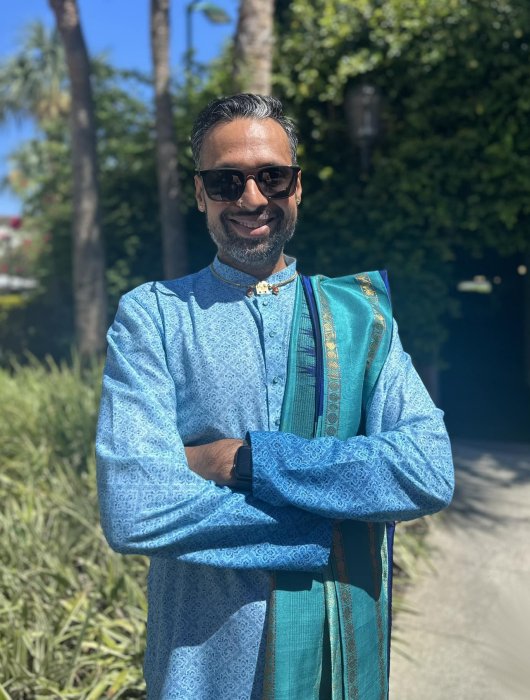 Kiran Rajagopalan Non-binary dance artists like Bharatanatyam dancer Kiran Rajagopalan, are beginning to investigate the vocabulary and language of Indian classical dance. He feels that themes and narratives that align closer with his identity are more important now than ever. Falling back on themes like BRIHANNALA and SHIKHANDI from the Mahabharata epic, is too convenient and overdone. It is time to create a contemporary mythology, draw from modern literature and poetry, and push the familiar vocabularies towards new meanings. This, Kiran feels, calls for collaboration, patience, humility, and time. I have learnt so much from so many of these non-binary, wildly imaginative, generous and supremely talented individuals in the worlds of art, fashion, music, architecture, travel, cosmetics, photography, choreography- and just an all-round passion for life. I am grateful to so many of you, who are in my life - you know who you are. Thank you for being my cheerleaders and for believing in my dreams. #URGENT ART We watched the crumbling of the Berlin wall on television. It is widely believed that the end of Vietnam war was hastened after the horrific images were shown to Americans on their daily evening news. Now, almost everywhere, except in India, where the national elections continue to dominate headlines, news channels have the lead story only about the Israel-Palestine conflict. During my visit to Copenhagen, Denmark, the chatter in coffee shops was about the Eurovision Song Competition, which is Europe's biggest television event. Huge crowds gathered inside and outside the auditorium in Malmo, Sweden, to protest and boo Israeli singer Eden Golan. There was so much anger directed at this 20 year old performer that Ms Golan was surrounded by heavily armed security guards wherever she went. Eden Golan did not win the competition, but that single cultural event displayed the mood of the general public towards the mounting death toll in Gaza. Wearing the Keffiyeh scarf has become a visible act of protest with many young people across the world. A few Indian dancers are also draping this fabric and continuing to perform dances about the ongoing conflict dressed in traditional dance attire. Is it mere tokenism? In India there are so many social issues of caste and class to grapple with. Children are dying of hunger and orphanages are starved for donations to feed their inhabitants. Nigeria has announced a tough and crippling law against the LGBTQ communities. Every country is grappling with growing social unrest and inequality. So why then GAZA? Why have Indian dancers become gripped with the ongoing conflict? Is it the relentless television images? Do they truly understand the complexity and the political backdrop of the 75 year old issue? Or is it another chance to make a reel? Another gig? 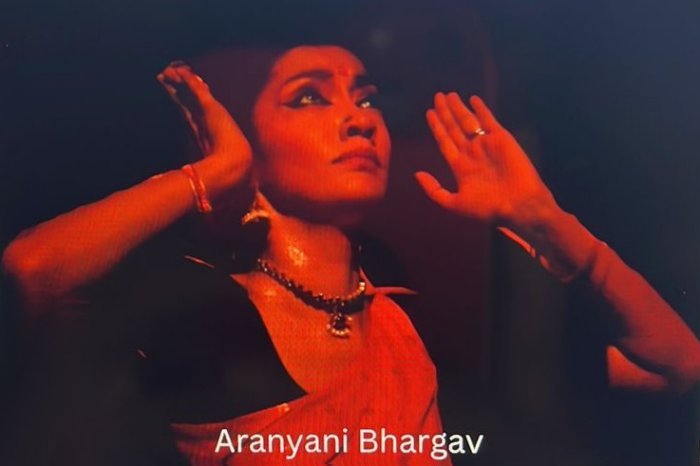 Bharatanatyam dancer Aranyani Bhargav has initiated a call for all Indian classical dancers to unite in support of the children of Gaza who are suffering in this eight month long conflict. The death toll is 15,000 children killed and mounting. Over 150 dancers responded (me included, with my injured arm) by sending a single photo. The movement has since grown towards a performance evening in Bangalore on July 7. 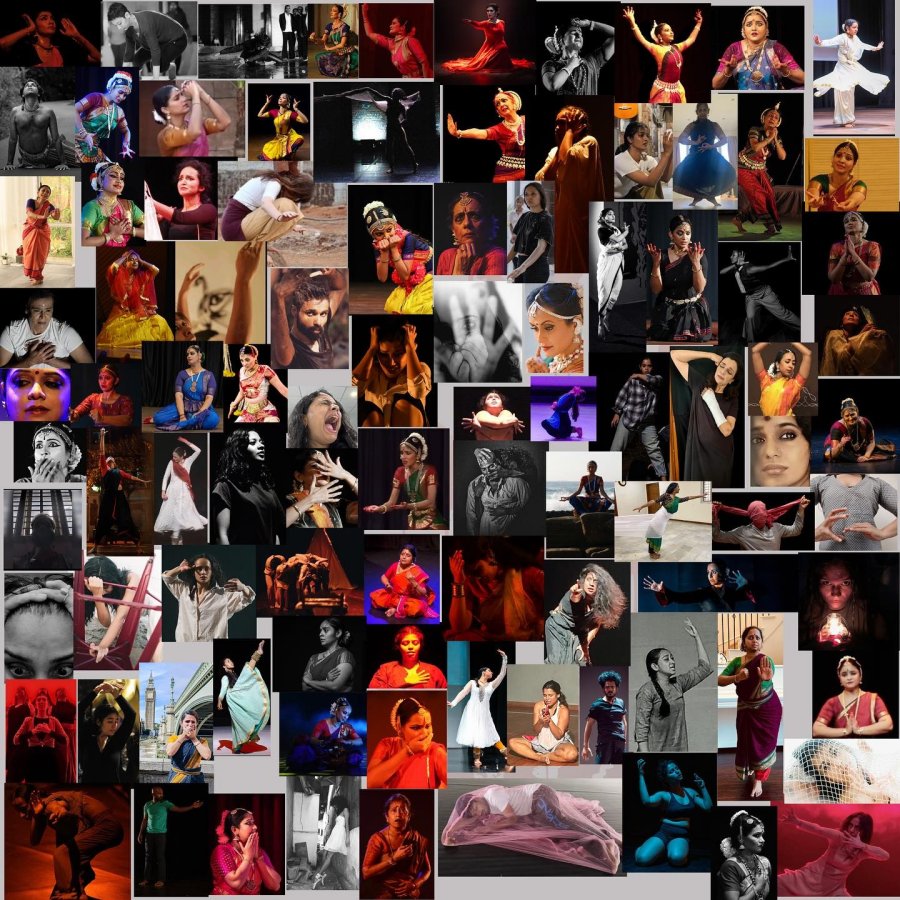 There is an unease about being on the wrong side of history. Many dancers feel as if they are being forced to take a side and choose a position. Critics who write about social political issues of caste, race, and gender are calling this an "Upper class performative emptiness", "a massaging of personal ego and self-gratification." I have always believed that such intense and gruesome conflicts are better interpreted through the mediums of cinema, theatre, writing, public speaking and even poetry. The dancing body is both limited and distracting. It cannot convincingly portray the savagery of war without the collaboration of sound projection, light and giant spectacle. Having said this, I also agree with Aranyani who claims, "Our bodies are the canvas, and we must respond in the way we know and understand." 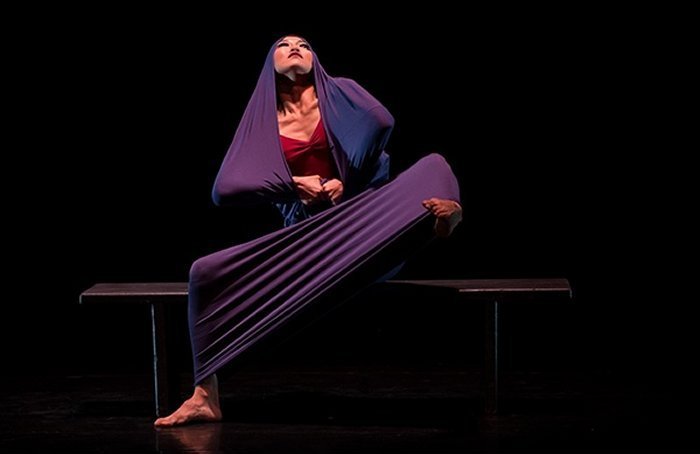 Lamentation The daily onslaught of death and disaster on TV and social media bring back the macabre words of CNN founder, Ted Turner. "War and death make great news." I recall here the iconic solo by Martha Graham in 1930. LAMENTATION was her response to the horrors of World War I. Draped in the purple stretch jersey cocoon, the choreography continues to live and speak about a woman / mother / daughter / sister's response to the senseless destruction. Martha Graham - LAMENTATION Every creative individual has a right to respond in the way they feel best equipped to. There are many young dancers who have refrained to comment or participate in what looks like a war without an end. Writer Samhita Arni puts it succinctly. "War is kind to men - it is the women and children who are left behind, wailing lakes of blood". #HEERAMANDI- The lost lustre 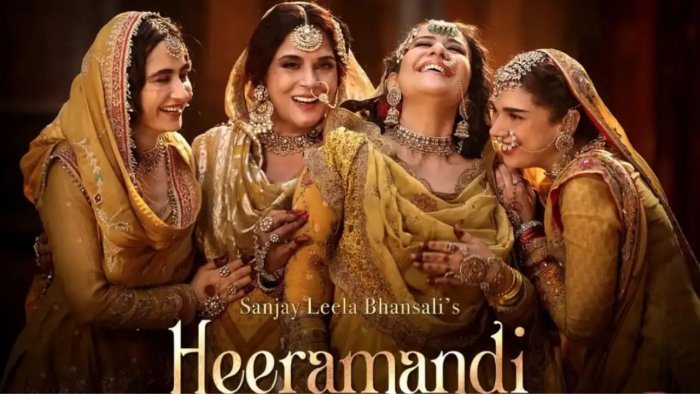 There is simmering discontent and grumbling in the Kathak community about the new Netflix television series HEERAMANDI-the diamond bazaar, which highlights the lives of the famous courtesans of Lahore in pre-partition India. The gorgeous spectacle, fabulous costumes, pleasing music, and pleasant choreography by Kruti Mahesh and Ashish Patil, has not been able to save the eight part series from savage criticism. The accomplished and talented hereditary artistes have been reduced to cardboard cut outs of sex starved, manipulative women with none of their literary, performative and creative genius being explored. In reality, HEERAMANDI was a very famous locality in present day Pakistan. Sons and daughters of nobility and the socially affluent were tutored by these performers on the finer nuances of courtesy and social graces. Childless families also adopted children from this community. These women were empowered, wealthy, creative and brilliant and were the most sought after special guests for any social event. Today, they would be the A-listers, walking the red carpet at Cannes and the MET Costume ball! Senior Kathak Guru Shovana Narayan, who has not watched the series but who has heard a lot of commentary on it, says, "These families of highly accomplished artistes were poets, writers, authors, musicians, and performers and were the final word on every aspect of etiquette. Seizing only the titillating, eye catching and gossip-worthy aspects of these artistes' lives is irresponsible. Such skewed depictions become resource material for future generations." Kathak performer and teacher Sangita Chatterjee has another viewpoint. "This is Kathak inspired choreography. The abhinaya depicted is filmy and certainly not the kind of abhinaya that is performed in Kathak. The films Pakeezah and Umrao Jaan had great artistes, great stalwarts like Guru Lachchu Maharaj, Pandit Birju Maharaj, and Kumudini Lakhia as choreographers." In Kathak classes, students are avidly discussing the series and trying to imitate the sensuous GAJAGAMINI walk and suggestive glances of these artists. The dance teachers are now having to explain the historical and social backdrop of the story and to acknowledge this community's participation in the fight to free their land of colonial rule. New students are enrolling in classes and asking to be taught "HEERAMANDI KATHAK." One young dance teacher said that thanks to Sanjay Leela Bhansali, at least people know what is Kathak and they don't confuse it anymore with Kathakali! Small mercies indeed! HEERAMANDI is a runaway hit with audiences worldwide but I had to plod through the episodes, getting more and more impatient with the fudging of history and the storyline. The word "Mujra" has become a pejorative, and is being used by senior politicians at their election rallies. On Instagram, Indian dancers across styles are using audio clips from the series to create their own reels, but the final result appears overtly coquettish. #PUSH BACK ON TRIGGER ALERTS  When I read the trigger alert before the classic Martin Scorsese film GOODFELLAS, I felt the limit had been reached. This 1990 film is a terrific story about the Sicilian/Italian mafia. The announcement was claiming to "not hurt the sentiments of any particular community." Really? The dreaded mafia - Cosa Nostra - was from Sicily, Italy. During my visit to PALERMO, tour guides were proudly showing me buildings with bullet holes where shootouts occurred, and among the most popular walking destinations is a particular mountain that contains numerous buried bodies - casualties of the brutal Sicilian mob war. Are we taking these trigger alerts too far? 87-year-old British actress Judy Dench had a blunt response to this trend. "Get a thick skin or stay home", she suggested. Other senior British actors are pushing back at such announcements being made before the start of some Shakespeare plays. "We know that there will be revenge, murder, death, even incest, but nobody wants to be told that King Lear will die even before the play starts", said actor Ralph Fiennes. The very act of going to watch Theatre and Dance, or any of the LIVE arts is to be provoked, stirred, moved and to emerge, perhaps thoughtful, maybe even disturbed. What is the purpose of art? How can every creative thought or idea be filtered through the woke/trigger alert lens? Will this mean that before some traditional dance pieces that suggest a minor girl's infatuation with an older man/God, we need to include trigger alerts in the announcements? There are some traditional Javalis and Padams, which have suggestive and sensual lyrics. Today's young dancers often perform these traditional pieces without a complete understanding of the subtext. In the name of empathy, sensitivity, inclusivity and caring, how far will this political correctness be stretched? 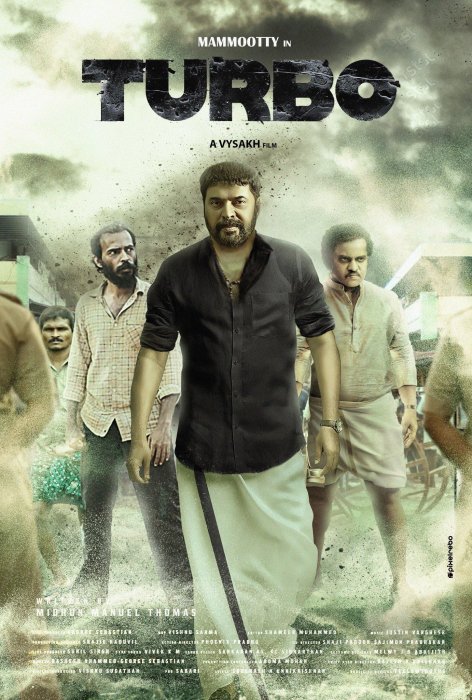 I now read about something else that's emerging. Sending legal notices for negative film reviews. It has begun with the Malayalam film TURBO starring actor-icon Mammootty. The producer's notice claims that negative reviews will hurt the film's commercial box office prospects. Gosh! In the dance world, we don't even think about box office because we don't have one! Most performances are free, free, free! As for negative reviews, nobody really cares because if any hint of something that is less than adulatory about a certain performance appears in public, it is immediately countered with all kinds of identity accusations, cancellation notices and insults on social media. #WHOSE RIGHT IS IT? Copyright continues to fester and trouble many Indian dance and ARTS managers and producers. The current legal tussle between Tamil film music composer Ilaiyaraja, and the makers of the Malayalam film MANJUMAL BOYS is an interesting case study. According to copyright lawyer Gladys Rosette Daniel, there was an amendment to the 2017 copyright act for music and sound recordings. In that year, the act was changed to accommodate the rights of the lyricist and the composer. A three way split of copyright. Not just the producer, even if the producer has paid both the composer and the lyricist for their work. So composer Ilaiyaraja's claim that he has not given permission or been paid a compensation for the use of his song in the film's publicity campaign is a double edged sword. The matter is now in the courts, and one of the solutions is that the producer of the film should pay both the composer and the lyricist an additional amount for the outright purchase and thus become the sole copyright owner. When it comes to dance productions and stage related work, this copyright act is very different. Regarded as Dramatic Works, the complete copyright rests with the producer - who is that person who has paid for the music, lyrics (if written fresh), costume design, stage design, sets, lighting, publicity material, photography, videography, social media engagement and choreography. Even if an independent choreographer has been hired and commissioned to mount the choreography on company dancers, it is the person who pays for all these services who owns the copyright of the completed dance - stage - theatre - live Arts work. However, Gladys Rosette Daniel cautions that while taking signed receipts for payments, every artist and professional, who has been engaged and paid for their services, must also sign a release assigning all future use of the said creative material to the producer IN PERPETUITY. Particular attention should be paid in getting the releases for music composition because it often entails huge costs to the dance producers. This is more paperwork, especially for Indian dancers and companies based in India, but this is a very normal procedure for many South Asian dance companies and independent artists who work overseas. Particularly while receiving taxpayers grants from Arts councils to incubate, perform and tour the dance work, these kinds of signed receipts and releases become all the more important. #JUNETEENTH and more June contains the longest day of the year - the 21st - the summer solstice. It's also Father's Day on Sunday, June 16. It is also the month where June 19 is marked as Juneteenth - to commemorate the emancipation of enslaved people in the US. And of course it's 30 days of celebrating PRIDE. With the sun shining, I hope your spirits are soaring. Your heart is warm and your hopes flying high. Stay positive in the world that has seemingly gone mad. Renew your faith in the Dance art and most importantly, in yourselves. - Anita R Ratnam Chennai anitaratnam.com Thank you for the growing support to my podcast ANITA SAYS on Spotify. Make sure to tell your friends to listen, subscribe and comment. I have been writing this monthly column since January 2011, and that means it has been nearly 14 years and over 160 editorials. Dance continues to engage, interest and fascinate me, and I hope to continue sharing and discussing the art form that binds us all. Connect with us on Instagram and Facebook Post your comments |